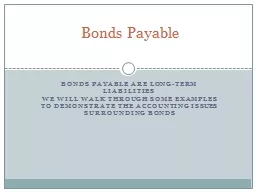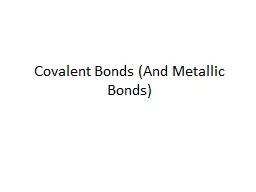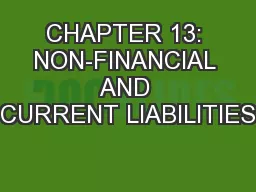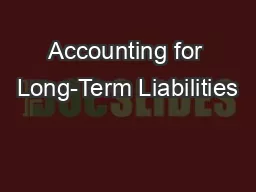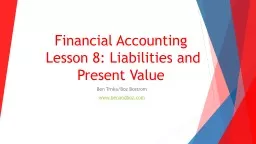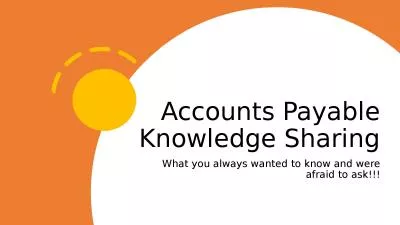PPT-Bonds Payable are long-term liabilities
Author : yoshiko-marsland | Published Date : 2020-04-06
We will walk through some examples to demonstrate the Accounting issues surrounding bonds Bonds Payable Bond Specifics Companies obtain financing for large projects
Presentation Embed Code
Download Presentation
Download Presentation The PPT/PDF document " Bonds Payable are long-term liabilities" is the property of its rightful owner. Permission is granted to download and print the materials on this website for personal, non-commercial use only, and to display it on your personal computer provided you do not modify the materials and that you retain all copyright notices contained in the materials. By downloading content from our website, you accept the terms of this agreement.
Bonds Payable are long-term liabilities: Transcript
Download Rules Of Document
" Bonds Payable are long-term liabilities"The content belongs to its owner. You may download and print it for personal use, without modification, and keep all copyright notices. By downloading, you agree to these terms.
Related Documents

